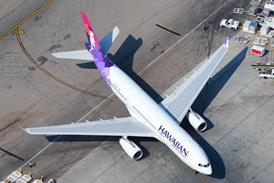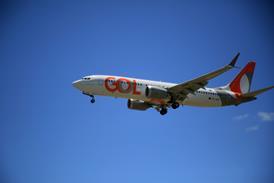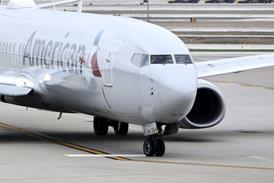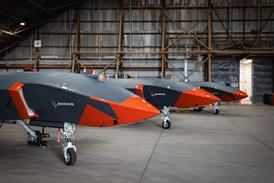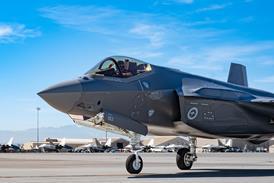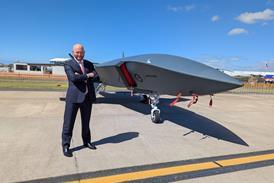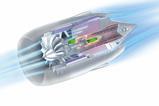If you had to make a comparison, ATR’s performance in recent years has been a little like one of its twin-turboprops: slow and steady.
Although orders have been accelerating year on year – reaching 56 in 2024, up from 40 in 2023 and 26 in 2022 – production has not followed the same trajectory, annual deliveries remaining mired in the mid-30s.
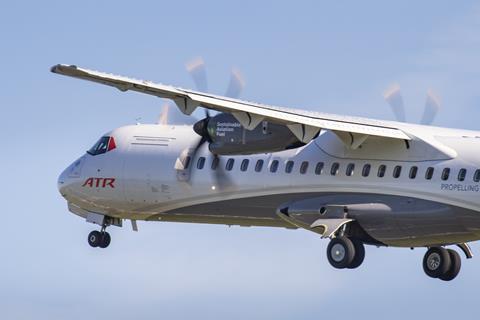
Supply-chain pressures have been at the heart of the issue – a turbulent flow of parts to the final assembly line frustrating the Franco-Italian airframer’s efforts to ramp output.
In all, ATR handed over 35 aircraft last year (with a further example ready but stuck waiting for customer acceptance), matching 2023’s delivery performance.
Chief executive Nathalie Tarnaud Laude forecasts more of the same in 2025 as the manufacturer wrestles with a supply chain that, she says, is still “very constrained”.
While she calls the flat delivery profile “stabilisation” and hails a book-to-bill ratio above one last year as illustrative of continued robust demand, a situation where orders outstrip deliveries is far easier to achieve when build-rates remain subdued.
Ultimately, ATR’s inability to raise production is a brake on sales of new aircraft, concedes Alexis Vidal, senior vice-president commercial at the Toulouse manufacturer.
Indeed, with a backlog now in excess of 150 aircraft and the next production slot not available until 2026, “this year, if you wanted to buy an aircraft, I would probably redirect you to a leasing company”, he says.
But ATR is hopeful that, with a reconfiguration of its final assembly line in the works and a steadily stabilising supply chain, output can accelerate from 2026 onwards, reaching as many as 60 aircraft per year.
For Vidal, the company’s sales chief, that moment cannot come soon enough. Two broad factors are driving demand, he says: replacement – of both regional turboprops and elderly jets – and growth.
“We see that aviation as a whole is growing, it is recovering from Covid and growing at quite a significant rate and it needs aircraft to satisfy that.”

That across-the-board expansion requires regional turboprops – for connectivity or feed – just as much as it needs larger jets, he says.
In the regional segment, though, ATR benefits from being in the enviable position of having no direct competitor: its closest rival, De Havilland Canada, paused its Dash 8-400 turboprop programme in 2021 and has yet to say when production might resume.
While Vidal acknowledges this has helped sales he argues that, in reality, ATR’s competition comes from multiple avenues: “It’s not like we have no direct competition – we always compete with other modes of transport.
“Our ambition is to continue to drive people from people from the surface and ground transport to air travel.”
As an illustration, he points to India. There, research conducted on ATR’s behalf showed that, of the 20 million people taking journeys of 100-400nm (185-740km), just 3% were travelling by air in prime regional turboprop territory.
“This gives us very strong intel on where the next routes or pockets of demand between point A and point B are, where people might switch from ground to air.”
Similar dynamics are at play across Asia-Pacific, fueled by the region’s demographics and geography.
Of course, while the switch from ground to air might be societally or politically desirable in multiple regions – connecting communities otherwise isolated because of geography or sparse ground infrastructure – the same cannot be said in Europe.
Here, the political imperative is the opposite: encouraging people to switch from air to ground transport for environmental reasons. “Western governments see things from a slightly different angle,” admits Vidal.
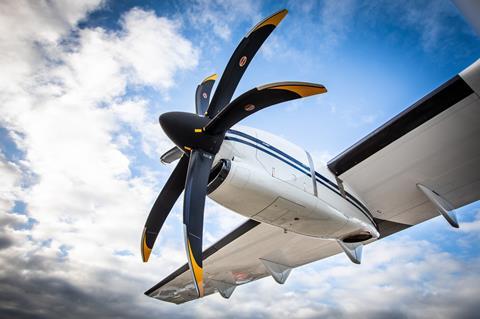
Nonetheless, he argues that ATR can play a part: switching a regional jet with a regional turboprop for short routes offers a lower-impact alternative “before thinking about replacing aircraft with other modes”.
He points to Austrian Airlines’ wet-lease arrangement with Braathens Regional Airlines that, from last summer, saw two ATR 72s deployed on regional routes into Vienna instead of Embraer 195s, better aligning capacity with demand. “It is a better-suited aircraft to the operation,” says Vidal.
Over the last five years, European carriers have added a little over 30 ATRs to the region’s fleet, he says. “This is a strong testimony of why this aircraft makes sense, including in the current angle that Western governments are taking.”
But for all ATR’s efforts to make turboprops seem green and attractive, there remains a lingering perception among some travellers that they are slow and noisy relics of a bygone age, the polar opposite to ‘modern’ jet-powered alternatives.
Vidal admits this view may still hold true “in some jurisdictions” but points out that the raft of next-generation designs – whether electric-, hybrid- or hydrogen-powered – “are all based around propellers”.
This, he says, “puts the technology on the ATR back at the centre of the discussion”.
Improvements to the cabins on the ATR 72-600 and 42-600 – offering an all-business configuration or Starlink wifi on board – are another way the company aims to shed the turboprop’s ‘old-fashioned’ reputation.
Unfortunately, one of the regions where “there is still some work [to be done] on perception” is the USA, where, despite ATR’s best efforts, sales have been limited to a handful of aircraft.
A pilot shortage too has not helped, which has “slowed down our success in getting more ATRs into this market,” he adds.
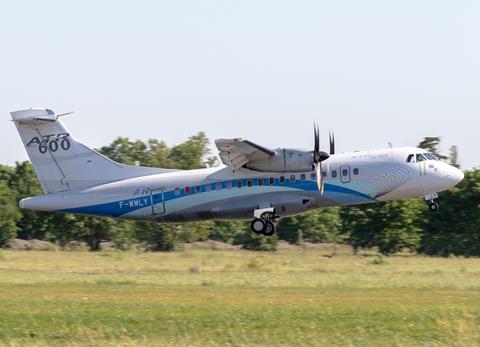
However, Vidal remains hopeful. The need for US carriers to replace ageing 50-seat jets, relatively high fuel prices, and demands to restore lost regional connectivity are combining to offer ATR an opportunity.
“Fundamentally the need for regional air connectivity remains and the relevance of the ATR for that market is clear,” he says.
Conversations with potential customers are continuing, he says, and “we would like to have success there this year”.
Further tweaks to the aircraft may be required to fully open up the market, such as the addition of a main cabin door at the front of the fuselage to allow jet bridge access, but are seen as relatively minor modifications.
At just 1,390 employees, ATR remains a relatively small entity compared with shareholders Airbus and Leonardo. As such, the cancellation last year of the short take-off and landing (STOL) variant of the ATR 42-600 should free up engineering resources for other projects.
But while that will allow the airframer to refocus its priorities, how awkward, one wonders, were calls to customers last year when informing them that development of the STOL had stalled?
“I would not call them awkward,” says Vidal. He points to lessor Abelo’s decision to convert its order for 10 STOL aircraft to five ATR 72-600s and five 42-600s as a proof of customer pragmatism and continued desire for the product.
“In general, customers understood and we are working with them to adjust the course of their orders,” says Vidal.
“In many cases we are seeing whether the ATR 42 without STOL capability would still meet the demand anyway.”
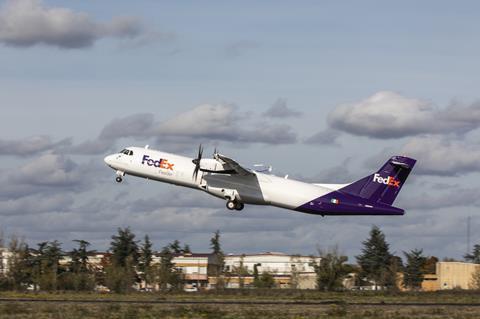
He will not say when negotiations for the remaining 11 orders will conclude but is confident agreements will be reached.
ATR’s decision to axe the STOL development – which was already overrunning by two years – was based on a reappraisal of the addressable market for the variant. This concluded that the number of short runways that suited its operation was shrinking on the back of infrastructure investments – upgrades to existing sites or construction of brand-new facilities.
Did ATR simply get its sums wrong? Vidal is reluctant to criticize his predecessors – the launch decision was made before his appointment in June 2023 – but points to the imperfect nature of forecasts. “You sometimes make an assessment of the market and by definition forecasts are subject to the changes in the market environment.”
One unsung success story for ATR, though, is the factory-built freighter version of the ATR 72-600. More than 20 examples are now in operation for FedEx since it entered service in late 2020.
FedEx, the launch and so far only customer for the model, still has “a couple of years of deliveries left” from its 30-unit order, and Vidal is sure others will soon join the express logistics operator.
“We are developing other prospects, I’m pretty confident on what I see on the commercial side of things.
“I would want by the end of the first half to have a commercial success,” he adds.


